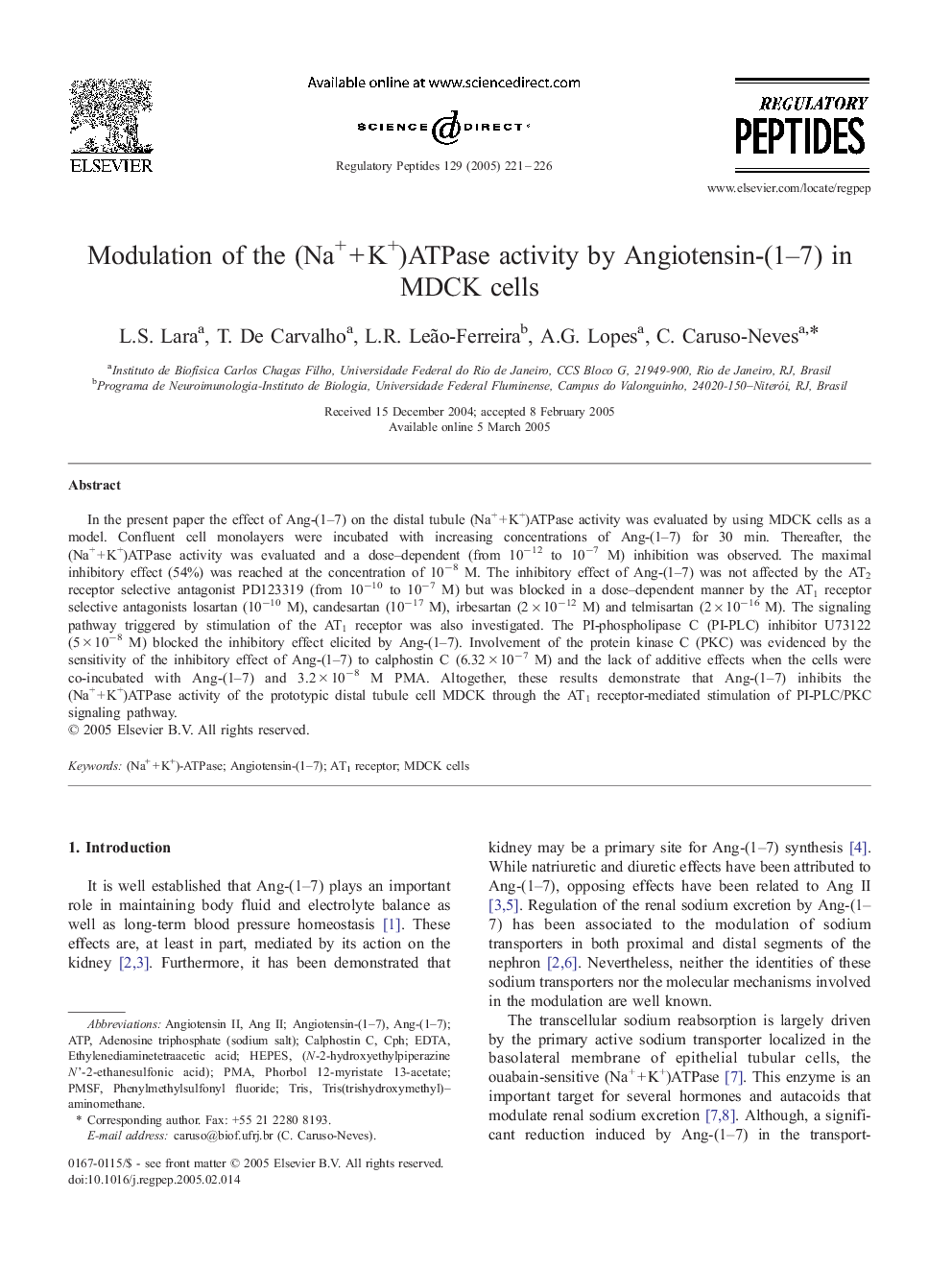| Article ID | Journal | Published Year | Pages | File Type |
|---|---|---|---|---|
| 9894427 | Regulatory Peptides | 2005 | 6 Pages |
Abstract
In the present paper the effect of Ang-(1-7) on the distal tubule (Na+Â +Â K+)ATPase activity was evaluated by using MDCK cells as a model. Confluent cell monolayers were incubated with increasing concentrations of Ang-(1-7) for 30 min. Thereafter, the (Na+Â +Â K+)ATPase activity was evaluated and a dose-dependent (from 10â12 to 10â7 M) inhibition was observed. The maximal inhibitory effect (54%) was reached at the concentration of 10â8 M. The inhibitory effect of Ang-(1-7) was not affected by the AT2 receptor selective antagonist PD123319 (from 10â10 to 10â7 M) but was blocked in a dose-dependent manner by the AT1 receptor selective antagonists losartan (10â10 M), candesartan (10â17 M), irbesartan (2Â ÃÂ 10â12 M) and telmisartan (2Â ÃÂ 10â16 M). The signaling pathway triggered by stimulation of the AT1 receptor was also investigated. The PI-phospholipase C (PI-PLC) inhibitor U73122 (5Â ÃÂ 10â8 M) blocked the inhibitory effect elicited by Ang-(1-7). Involvement of the protein kinase C (PKC) was evidenced by the sensitivity of the inhibitory effect of Ang-(1-7) to calphostin C (6.32Â ÃÂ 10â7 M) and the lack of additive effects when the cells were co-incubated with Ang-(1-7) and 3.2Â ÃÂ 10â8 M PMA. Altogether, these results demonstrate that Ang-(1-7) inhibits the (Na+Â +Â K+)ATPase activity of the prototypic distal tubule cell MDCK through the AT1 receptor-mediated stimulation of PI-PLC/PKC signaling pathway.
Keywords
Related Topics
Life Sciences
Biochemistry, Genetics and Molecular Biology
Biochemistry
Authors
L.S. Lara, T. De Carvalho, L.R. Leão-Ferreira, A.G. Lopes, C. Caruso-Neves,
